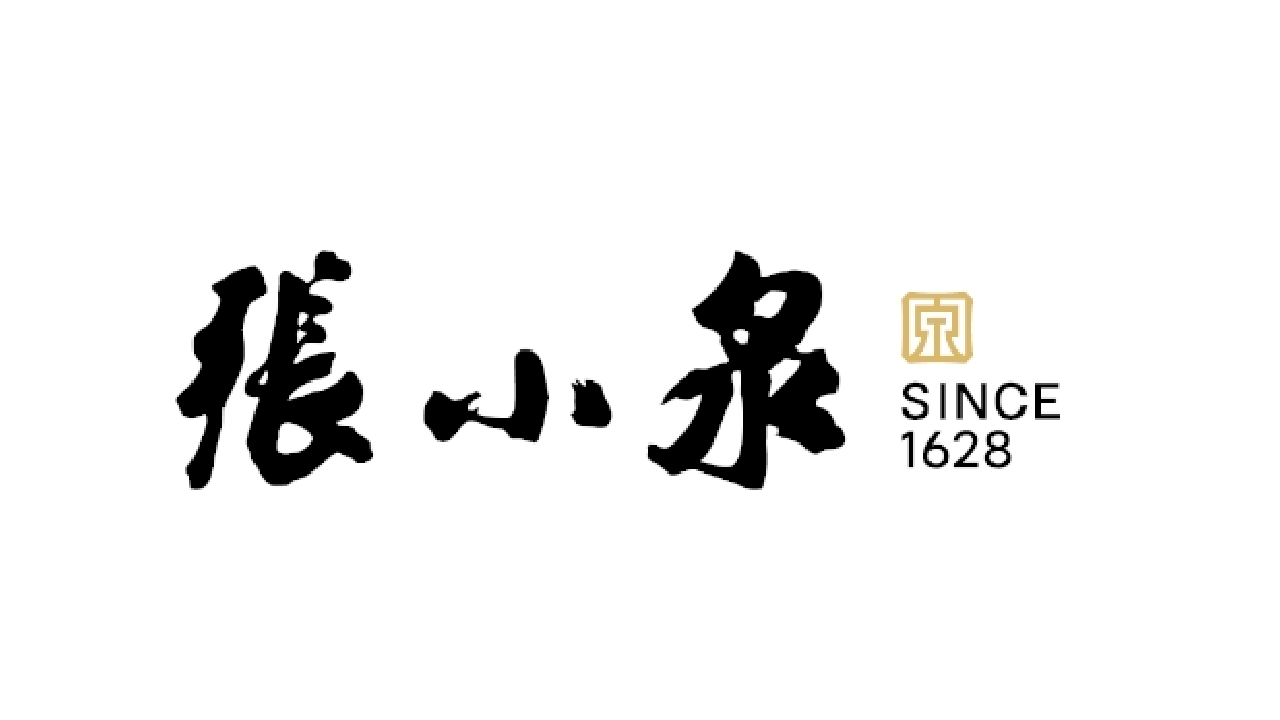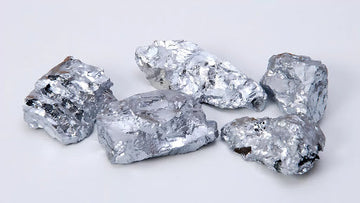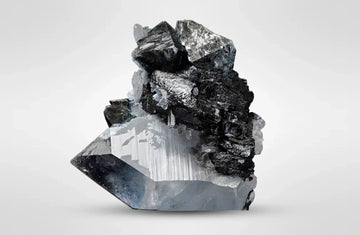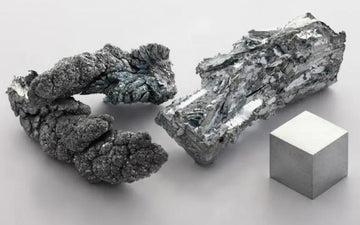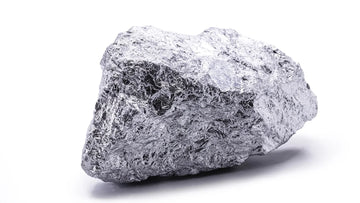Chromium is an important element that changes how kitchen knives work. It helps knives resist rust and affects how they cut. Understanding chromium helps us know why different knives work better for different jobs.

What Is Chromium Element?
Chromium is a natural element with the number 24 on the science chart of elements. It looks steely-gray with a shine, and it's very hard but can break if you bend it. It's the third hardest element after carbon (which makes diamonds) and boron. Chromium is so hard it can scratch quartz, but corundum can scratch it.
Chromium has some special qualities:
- It melts at extremely high temperatures (1907°C)
- It boils at even higher temperatures (2671°C)
- It reflects light very well, bouncing back almost 70% of normal light and 90% of infrared light
The most useful thing about chromium is that it doesn't rust easily. When chromium touches air, it forms a thin protective layer on its surface. This layer shields the metal underneath from rusting. At normal temperatures, chromium doesn't react to seawater or air, whether wet or dry.

How Chromium Works in Steel Kitchen Knife?
Stopping Rust
The main reason knife makers add chromium to steel is to fight rust. When steel has chromium in it, the chromium creates a protective shield on the knife's surface. This shield changes the metal from a state that can dissolve in liquids to a stable state that resists chemical damage.

For steel to be called "stainless," it needs at least 13% chromium. More chromium means a better protective shield and better rust resistance. This matters a lot for kitchen knives because they often touch acidic foods, water, and salt.

Keeping Edges Sharp Longer
Chromium helps knives stay sharp by forming hard particles called carbides in the steel. These carbides resist wear, though they aren't as hard as some other types of carbides found in special knife steels.

Tests show that vanadium carbides work better than chromium carbides at keeping edges sharp during slicing. That's why some high-quality knives have both vanadium and chromium.
Making Knives Harder and Stronger
Chromium increases both the strength and hardness of knife steel. It helps the steel harden more deeply and evenly during heat treatment. But too much chromium can make the knife less tough, creating a trade-off between hardness and durability.
Creating Special Steel Structures
Chromium helps form carbides in knife steel. These carbides can reduce brittleness, but sometimes they hurt edge retention. In steels with lots of carbon, much of the chromium gets trapped in carbides, making it less effective at preventing rust.

This is why knife makers carefully balance chromium with other elements. For example, in D2 steel with 1.55% carbon, much of its 11-12% chromium is tied up in carbides instead of forming the protective rust-resistant layer.
Common Knife Steels That Contain Chromium
Knifemakers around the world use chromium in their steels, but they make different types for different needs. Let's look at the main chromium steels from Germany, China, and Japan.
German Chromium Steels
German knives are famous for their durability and rust resistance. Their steels contain plenty of chromium:
X50CrMoV15 is the most common German kitchen knife steel. The name tells us it has 0.5% carbon and 15% chromium, plus molybdenum and vanadium. Wüsthof and Zwilling J.A. Henckels use this steel in many of their knives. It resists rust very well, stays reasonably sharp, and is tough enough to handle rough use.
X55CrMoV14 contains slightly more carbon (0.55%) and 14% chromium. Messermeister often uses this steel. The extra carbon makes it a bit harder and helps it hold an edge longer, while still keeping good rust resistance.
1.4116 is another German stainless steel (similar to X50CrMoV15) with about 14-15% chromium. Wüsthof uses this in many of their knives. It offers a good balance of hardness (around 56-58 HRC) and toughness, making it hard to chip but relatively easy to sharpen.
4116 is used by Henckels in their more affordable lines. It contains around 15% chromium and is more rust-resistant than hard. It's easy to maintain and can take a lot of abuse without breaking.
D2 is a "semi-stainless" steel with 11-12% chromium and high carbon (1.5-1.6%). It's known for excellent edge retention but is harder to sharpen due to numerous chromium carbides. While not fully stainless, it resists rust better than carbon steels. Chefs use it for heavy-duty tasks where edges need to stay sharp through tough ingredients. Hardness: 58-62 HRC.
Chinese Chromium Steels
Chinese manufacturers make a wide range of steel types, with straightforward naming systems based on chromium content:
3Cr13 has about 13% chromium with low carbon (0.3%). It's an inexpensive steel used in budget knives. It resists rust well but doesn't stay sharp very long.
4Cr14 contains 14% chromium and 0.4% carbon. It's slightly better than 3Cr13, offering improved rust resistance and edge retention while remaining affordable.
5Cr15MoV has 15% chromium, 0.5% carbon, plus molybdenum and vanadium for better performance. It's similar to X50CrMoV15 but usually not made with the same quality control. Many budget kitchen knives use this steel.
7Cr17MoV contains 17% chromium and 0.7% carbon with molybdenum and vanadium. The higher carbon content gives it better edge retention than 5Cr15MoV, while the 17% chromium provides excellent rust resistance.
8Cr13MoV is often called "Chinese 440C" because it's similar to the American 440C steel. With 13% chromium and 0.8% carbon plus molybdenum and vanadium, it offers a good balance of rust resistance and edge retention. It's very popular in budget and mid-range knives.
9Cr18MoV is higher-end Chinese steel with 18% chromium and 0.9% carbon, plus molybdenum and vanadium. This higher-quality steel offers excellent rust resistance and good edge retention. Better Chinese kitchen knives often use this steel.
10Cr15CoMoV is a premium Chinese steel containing 15% chromium, 1.0% carbon, and adds cobalt alongside molybdenum and vanadium. The cobalt improves hardness and heat resistance, while vanadium enhances edge retention. This high-quality steel offers excellent performance similar to some Japanese steels, with good corrosion resistance and long-lasting sharpness. It appears in higher-end Chinese knives and typically reaches a hardness of 60-62 HRC.
Japanese Chromium Steels
Japanese makers blend traditional knife-making with modern steel technology:
VG-10 is a popular Japanese stainless steel with about 15% chromium, and 1% carbon, plus molybdenum, vanadium, and cobalt. Brands like Shun and Tojiro use it in many knives. It stays sharp longer than German steel while still resisting rust well. It can reach a hardness of 60-62 HRC.
AUS-8 contains around 14-15% chromium and 0.75% carbon. It's considered a good mid-range steel that's easier to sharpen than VG-10 but doesn't hold an edge quite as long. Many affordable Japanese knives use this steel. Hardness: 58-59 HRC
AUS-10 is an upgraded version of AUS-8 with about 1% carbon and 13-14.5% chromium. It offers better edge retention while maintaining good rust resistance. Brands like MAC use variations of this steel. Hardness: 59-60 HRC
SG2/R2 is a powdered metallurgy steel with around 15% chromium and high amounts of carbon. It can reach extreme hardness (62-64 HRC) while still resisting rust. It stays sharp much longer than conventional steel but is more difficult to sharpen. High-end Japanese knives often use this premium steel.
ZDP-189 contains 20% chromium and an extremely high 3% carbon. It can reach a hardness of 65-67 HRC, making it one of the hardest kitchen knife steels available. It holds an edge for an incredibly long time but is very difficult to sharpen. Only premium Japanese knives use this specialized steel.
Special knife steels like CPM 154 resist rust better than traditional stainless steels like 440C. Advanced steels such as CPM S35VN have niobium carbides along with vanadium and chromium carbides, staying sharp longer than regular high-chromium steels like 440C and D2.
A newer steel called CPM MagnaCut removes chromium carbide and instead uses small, tough vanadium and niobium carbides. This improves both rust resistance and cutting performance.
Finding Balance: The Chromium Trade-off
Designing kitchen knives means carefully balancing different qualities. While chromium prevents rust, knives with very high chromium might not cut as well. Knifemakers must find the right balance.
Professional meat cutters often prefer regular steel over "super steels" because they can easily sharpen them back to razor sharpness. Edges with high vanadium, common in high-performance steels, lose their extreme sharpness quickly but stay usably sharp longer.
Tests show that edge retention depends mostly on wear-resistant alloys, then on carbon content, and finally on hardness (HRC). This knowledge guides how steels are made for different kitchen uses.
Is Chromium Safe for Humans?
Some people worry about toxic metals in knife steel, including chromium. But chromium in stainless steel knives is stable and very unlikely to come off into food during cooking. The rust resistance that chromium provides actually prevents it from getting into food.
In fact, some mineral supplements contain chromium, showing that small amounts are considered good for human health.

Conclusion
Chromium plays a key role in kitchen knife performance. It mainly prevents rust while also helping with hardness, strength, and wear resistance. The amount of chromium in knife steel represents a careful balance, with more chromium improving rust resistance while possibly affecting other performance qualities.
Understanding chromium's role can help you choose the right knives for different cooking tasks, whether you care most about rust resistance, edge retention, or a balance of both.
FAQs
Is chromium safe in kitchen knives?
Yes, chromium in kitchen knives is completely safe. The chromium in knife steel forms a stable, passive oxide layer that prevents the metal from reacting with food. This is actually why stainless steel knives are used widely in food preparation—the chromium makes them food-safe and resistant to corrosion. There's no risk of chromium transferring to food in harmful amounts during normal kitchen use.
Is chromium good for knives?
Chromium is excellent for knives as it provides crucial benefits: it creates rust resistance by forming a protective surface layer, increases steel hardness and tensile strength, and helps form carbides that improve edge retention. For steel to be considered "stainless," it needs at least 13% chromium. However, too much chromium can make sharpening more difficult and may reduce toughness, so knife makers carefully balance chromium with other elements.
Is chromium metal safe to use?
Yes, chromium metal in its stable form (as found in knife steel and cookware) is safe to use. The chromium in stainless steel forms a passive, non-reactive layer that actually prevents other elements from leaching into food. It's important to distinguish this from hexavalent chromium compounds, which are toxic but not present in kitchen knives. Small amounts of trivalent chromium are even considered essential nutrients in the human diet.
What does chromium do to steel knives?
Chromium provides four main benefits to steel knives:
(1) it creates corrosion resistance by forming a passive oxide layer.
(2) it increases the steel's hardness and tensile strength.
(3) it forms carbides that improve wear resistance and edge retention.
(4) it enhances the steel's response to heat treatment, allowing for consistent hardening throughout the blade. Steels with at least 13% chromium are considered stainless.
Is chromium in stainless steel safe to eat?
Chromium in stainless steel is safe and poses no health risk when used in cookware or knives. The chromium is tightly bound in the metal's structure and forms a stable oxide layer that prevents leaching into food. Small amounts of trivalent chromium (not the harmful hexavalent form) are essential nutrients that many people take as supplements. No evidence that properly manufactured stainless steel kitchenware releases harmful amounts of chromium.
How much chromium makes a knife stainless?
A knife needs at least 13% chromium content to be considered truly stainless (though some sources cite 11-12% as the minimum threshold). This percentage ensures enough chromium is available to form a complete passive film over the steel's surface, protecting it from corrosion. Steels with lower chromium content (like D2 with 11-12%) are considered "semi-stainless" and offer improved corrosion resistance over carbon steels but will still rust if not properly maintained.
Can a knife have too much chromium?
Yes, a knife can have too much chromium. While chromium improves corrosion resistance, excessive amounts can lead to larger chromium carbides that make the steel more difficult to sharpen and potentially reduce toughness. Very high chromium content can also limit the carbon content, which might reduce hardness and edge retention. Knifemakers carefully balance chromium with other elements like carbon, molybdenum, and vanadium to optimize overall performance.
How do I prevent my high-chromium knife from rusting?
Even high-chromium stainless knives can rust if not properly maintained. To prevent rust:
(1) hand wash and dry your knife immediately after use, especially after cutting acidic foods.
(2) never leave it soaking in water or in the dishwasher.
(3) store it in a dry place.
(4) occasionally apply a light coat of mineral oil if storing for long periods
(5) promptly clean off any rust spots that do appear using a mild abrasive like baking soda paste.
Why do some high-chromium knives still rust?
Even high-chromium knives can rust for several reasons:
(1) the passive oxide layer can be compromised by acidic foods, saltwater, or harsh detergents.
(2) in high-carbon steels, much of the chromium may be tied up in carbides rather than free to form the protective oxide layer.
(3) poor heat treatment can affect chromium distribution in the steel.
(4) microscopic surface damage can create vulnerabilities in the protective layer.
(5) prolonged exposure to moisture without proper cleaning and drying will eventually overcome even good corrosion resistance.
Is there a difference between chromium in German and Japanese knife steels?
Yes, German and Japanese knife steels typically use chromium differently. German stainless steels (like X50CrMoV15) often contain 14-16% chromium, prioritizing excellent corrosion resistance and toughness, with moderate hardness (54-56 HRC). Japanese stainless steels (like VG-10) often use 13-15% chromium but add more carbon and other elements to achieve higher hardness (60-62 HRC) and better edge retention, sometimes at the expense of some toughness. The Japanese approach often balances corrosion resistance with performance, while the German approach emphasizes durability and maintenance-free use.
